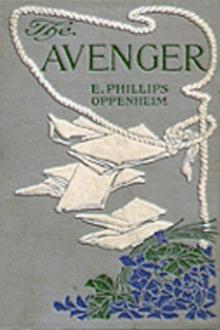Hitler's Terror Weapons, Brooks, Geoffrey [cat reading book .txt] 📗

Book online «Hitler's Terror Weapons, Brooks, Geoffrey [cat reading book .txt] 📗». Author Brooks, Geoffrey
Hirschfeld asked Tomonaga what the cases contained and was told, “It is the cargo from U-235. That boat is no longer going to Japan.” When he enquired at the 5th Flotilla Office, they told him that U-235 was Type VII training boat never intended for operations beyond the Baltic, and so he knew that Tomonaga had lied. He spoke to the commander privately a little later and was told, “For God’s sake, Oberfunkmeister, I must swear you to total secrecy and ask you not to raise the matter again with the Japanese. I will explain everything to you in Tokyo.” 125 Only five persons aboard U-234 knew that the small cases contained uranium: Fehler the captain, Ernst the chief engineer, Pfaff the third watchkeeper and the two Japanese.
The commander of the 5th U-Flotilla arranged a reception for Tomonaga and Shosi, and in a ceremony aboard the hulk of the liner St Louis Ambassador Oshima placed Tomonaga’s 300-year-old Samurai sword into Fehler’s care for the voyage. The other passengers boarding in Germany were:
Kapitänleutnant Richard Bulla, first watchkeeper, Staff Officer to Luftwaffe Attaché.
Oberst Fritz Sandrath (Luftwaffe), chief of Bremen flak defences.
Oberst Erich Menzel (Luftwaffe), technical aide to Air Attaché, communications.
KKpt Heinrich Hellendorn (Navy), naval flak gunnery.
Dr (Ing) Heinz Schlicke, radar, D/F and infra-red scientist.
Oberstlt Kai Nieschling (Luftwaffe), squadron judge.
FKpt Gerhard Falck, buildings and naval architecture.
August Bringewald, senior Messerschmitt engineer, Me 262, Me 163 and rocketry.
Franz Ruf, Messerschmitt procurement specialist.
The last passenger was to board in Norway. Nieschling, the Judge, was travelling to Japan to investigate allegations against Embassy personnel implicated in the Sorge spy scandal and to keep an eye on other passengers during the voyage. Tomonaga, Shosi, Nieschling and Falck slept in the deck below the NCO’s quarters, while all remaining passengers would sleep where they could.
Early on 26 March 1945, in convoy with three other U-boats and under heavy escort, U-234 sailed for Horten in Norway and arrived there next day after surviving an air attack off Frederikshavn. There now followed a period of idleness while Fehler awaited orders to sail. During exercises at Christiansand U-234 was rammed and damaged. Repairs had to be effected with shipboard tools in a quiet backwater. The last of the passengers, General Ulrich Kessler, the new Luftwaffe attaché to Tokyo, came aboard. Hirschfeld went every morning to the signals station to collect messages for the boat and on 15 April he took possession of a signal which read:
“U-234. Only sail on the orders of the highest level. Führer HQ.”
A short while afterwards he was summoned to fetch an urgent signal which stated:
“U-234. Sail only on my order. Sail at once on your own initiative. Dönitz.”
It is interesting to conjecture whether the visit of Grossadmiral Dönitz to Berne, Switzerland, on 12 April 1945 was connected with diplomatic moves following the death of US President Roosvelt that day. In order to provide a leader for Germany should the Reich be divided into two halves, north and south, on 15 April Hitler issued a decree vesting leadership in Dönitz and Kesselring respectively, and the order to U-234 to sail was probably the first important decision in Dönitz’ new role.
On the afternoon of 16 April, U-234 sailed after a brief farewell address from the Regional Commander of U-boats North (FdU) Kapitän zur See Rösing. According to Hirschfeld, Fehler had decided to take the Cape Horn route into the south Pacific because of enemy air and sea superiority in the Indian Ocean. Use of the snorkel was abandoned at the entrance to the Iceland-Faroes Channel because of a heavy swell and on 30 April the North Atlantic was reached sailing surfaced.
On the evening of 4 May 1945 Hirschfeld copied down the order of U-boat Command that all German submarines were to observe a ceasefire with effect from 0800 hrs German time the next morning. All attack U-boats were to return to Norway. In accordance with his secret orders, Fehler could ignore this instruction since he was not commanding an attack U-boat. Once the last long-wave transmitter Goliath shut down, naval telegraphists had to rely on short-wave senders, but when instructed to tune in to the Distel wavelength, Hirschfeld found that he had been supplied with a table of false frequencies.
On 6 May an American news broadcast was heard reporting the official declaration of Japanese Foreign Minister Togo that Japan considered herself free from all contracts and treaties concluded with the German Reich and would fight on alone; on the evening of 8 May Reuters issued a communiqué to the effect that Japan had severed relations with Germany and that, as a consequence, German citizens in Japan were being interned. Taking the two reports together, Fehler took the view that the purpose of his voyage was frustrated and that he should accept the capitulation.
His immediate problem was the two Japanese officers. He assumed they would try to prevent the cargo from falling into the hands of Japan’s enemies, and Fehler, after informing them of the political developments, placed them under arrest. Tomonaga and Shosi expressed understanding for his dilemma and wished him an honourable solution. In asking him to reconsider, Shosi gave his personal undertaking that the crew of U-234 would not be interned on completion of the voyage but would receive especially favourable treatment.





Comments (0)